Wiring Installation Practices
Wiring InstallationPractices
In this chapter, you will learn about
- Pre-wire planning and documentation
- Pre-wire installation tools
- Cable installation techniques
- Cable termination
- Trim-out installation and testing
The structured wiring performance is determined more by the quality of the installation practices used than the quality of the wire or cable. Not that the quality of the cabling isn’t important, but good cable can’t overcome a poor installation.
This chapter provides an overview of the wire and cable installation practices that should be used for installing cabling in a new construction environment. However, these practices and processes should also be applied to remodeling and retrofit projects, as appropriate, to ensure that the end result provides a high-quality wiring infrastructure to the homeowner. This chapter provides a general overview of the pre-wire phase of a structured wiring project. The general structured wiring planning, installation, and finish topics discussed in this chapter are covered in more detail in Part II’s Chapters 6 through 8.
Pre Wire Planning
As entertainment, networking, and communication technologies continue to emerge, homeowners are beginning to see the value of pre-wiring new homes not only for existing services, but also for those yet to come. In fact, the pre-wiring of a home with a structured wiring environment has virtually become a must feature for new home construction.
Assuming that the decision to pre-wire a home has been made, you and the homeowners should sit down as there are some planning issues that must be considered, such as:
- What types of Internet connections are available to the home and what type of service(s) do the homeowners wish to connect initially?
- What type(s) of video and television service is available to the home and to which type do the homeowners wish to connect initially?
- How many telephone lines do the homeowners plan to install?
- Is a distributed audio or video system planned for the home, now or in the future?
- What type of security system is planned?
- What type of HVAC system is planned? Is automated control desired?
- How do the homeowners see the house being zoned for each system (audio, security, HVAC, etc.)?
- Do the homeowners want systems integrated and controlled by a central control system?
The above list is certainly not complete for every situation, but it does cover the basics. Be sure to cover every subsystem that you offer for the home. The list considered should include some or all of the following:
- Structured Wiring
- Whole-house Music System
- Telephone/Intercom System
- Security System
- Lighting Control System
- HVAC Interface Control System
- Motorized Devices
- Integrated Control System
- Surge Protection
The idea of this step is for you, the pre-wiring planner, to gain a shared vision of the home’s structured wiring environment with the homeowners, and vice versa.
As a result of this dialogue, you should develop a rough sketch of the home that includes the locations of the devices and the home’s wiring requirements. Figure 3-1 shows one example of what this sketch might look like. In new construction situations, a walking tour of the home may be impossible, but in remodeling situations, walking through the home with the floor plan in hand will save time and money later.
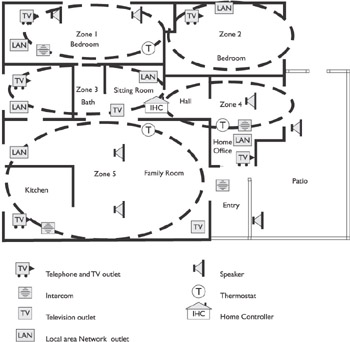
Figure 3-1: A preliminary workup of a home’s wiring plan using CEDIA icons
| Note |
The pre-wiring plan should also include any wiring that can be installed at this time to provide support for a feature that may be added in the future. |
The Pre Wire Process
The process of pre-wiring a house consists of the following major activities:
- Determine the locations of the distribution panel, outlets and devices.
- Create wire chart (see Table 3-1).
- Place outlet boxes or mud rings at each location.
- Pull the appropriate type and number of cable runs to each outlet and device location.
- Label all cables at distribution panel.
- Terminate or protect the cables at the outlets with the appropriate connecters or bagging.
- Test all cable runs and connections.
Table 3-1: A Home System Wire Chart. Used with permission from Heneveld Dynamic Consulting, Inc. Pulled
Tested
Run #
Type
Source
Destination
Device
Length
Special Instructions
1
Cat 5
House feed
Control center (CC)
Phone feed
Phone feed
2
Cat 5
House feed
CC
Future
Future
3
RG-6
House feed
CC
Future
Cable feed—Future
4
RG-6
Attic
CC
Future TV antenna
Loop extra cable
5
RG-6
Attic
CC
Future FM antenna
Loop extra cable
6
RG-6
Roof
CC
DSS feed
Satellite TV
7
RG-6
Roof
CC
DSS feed
Future satellite service
8
Cat 5
CC
Studio A
Phone jack
9
Cat 5
CC
Studio A
Data jack
10
RG-6
CC
Studio A
TV jack
11
Cat 5
CC
Studio B
Phone jack
12
Cat 5
CC
Studio B
Data Jack
13
RG-6
CC
Studio B
TV jack
14
Cat 5
CC
Living room Ent.
Phone jack
15
Cat 5
CC
Living room Ent.
Data jack
16
RG-6
CC
Living room Ent.
TV jack
17
Cat 5
CC
Up bedroom
Phone jack
18
Cat 5
CC
Up bedroom
Data jack
19
RG-6
CC
Up bedroom
TV jack
20
Cat 5
CC
Living room
Phone jack
21
Cat 5
CC
Living room
Data jack
22
Cat 5
CC
Up hallway
Phone jack
23
Cat 5
CC
Up hallway
Data jack
24
Cat 5
CC
Master bedroom
Phone jack
25
Cat 5
CC
Master bedroom
Data jack
26
Cat 5
CC
Up bedroom
Phone jack
27
Cat 5
CC
Up bedroom
Data jack
28
Cat 5
CC
Kitchen
Wall phone jack
Mount jack high on wall
29
Cat 5
CC
Front door
Future doorbell/intercom
Pre-wire for doorbell
30
16-4
Living room Entertainment
Living room Stairway wall
Speakers
Pre-wire for speakers—located on stairway wall, either side of opening
Pre Wiring Tools
Before beginning the pre-wire phase of your project, ensure that you have the tools you’ll need to drill holes, pull, strip, terminate, and test the installed cabling. The types of wiring and cabling to be installed should dictate the specific tools in your kit, but at minimum, you should have:
- Cordless hand drill and drill bits slightly larger than the diameter of the cablesTo drill cable path holes through studs, floors, and ceilings, as required
- Wire cutter/stripperFor cutting the cable to length and stripping its outer jacket during termination
- Needle-nose pliersFor use when terminating all cable types
- ScrewdriversFor the most part, you need both slotted head and crosshead recessed (Phillips) screw drivers
- Volt meter/continuity testerFor testing each cable run before termination and trim out
Wire Chart
Table 3-1 shows an example of a wire chart that should be created during the planning phase of a structured wiring project and used as a guide for the pre-wiring, rough in, and trim out of the structured wiring of a home. The format shown in Table 3-1 is only an example and you may want to include additional columns for other information, but the columns shown represent the minimum information needed during the complete wiring project.
A wire chart, like the one in Table 3-1, should be created during the planning phase of a structured wiring project and used to track the installation of the wiring throughout the remaining phases of the project. The information in the wire chart is taken directly from the project design and planning documents. If abbreviations are used on the wire chart, a legend should be created to ensure that everyone associated with the project understands their meaning.
The columns included in this wire chart example are
- PulledAfter each cable run is installed (pulled) from the source indicated in the “Source” column to the location listed in the “Destination” column, this column can be checked off and initialed by both the installer and whomever inspects his or her work. A double-check of the work is highly recommended to prevent oversight, errors, and omissions.
- TestedDuring trim out and after each cable run is terminated and tested, the corresponding box in this column for the cable run can be checked off and initialed by the tester and the person verifying the test. A double-check of the work is highly recommended to prevent oversight, errors, and omissions.
- Run #This column is used to create a unique identity and reference number for each cable run. The number or code assigned in this column can later be used in cable documentation and when labeling each cable. Cable number labeling systems provide self-adhesive numbered labels that can be affixed to each cable run at the distribution panel or control center (CC) end.
- TypeThe type of cable to be used is entered into this column for each cable run.
- SourceThe location from where the cable run is to begin is entered into this column. The Source and Destination columns provide the starting point and the ending point of the cable run.
- DestinationThe location to where the cable run is to be pulled is entered into this column. The Source and Destination columns provide the starting point and the ending point of the cable run.
- DeviceThe source, distribution, control, or outlet device to which the cable run is to be connected or will support is identified in this column. When a cable run is being installed for future-proofing (see Chapter 5) purposes, this information should be recorded as well.
- LengthThis is an optional column but can be helpful when comparing wire usage estimates to the actual installation. After guess-timating or length testing is completed on each cable run record the length in this column. Wire types used can be totaled up and compared to total usage wire estimates for the project. The information in the Length column may come in handy later when you are troubleshooting a cable for possible attenuation problems.
- Special InstructionsBecause it is common for one technician to design and plan a structured wiring job and another technician to install its cable, this column can prove valuable in noting any issues or instructions the installer should know before beginning his or her work such as device height. Any problems encountered by the installer should also be recorded should yet another technician perform the cable testing. This column can also be used to record any other information relating to a particular cable run that may be valuable for future reference.
Wall Outlets
The system plan that was developed earlier in the project (and discussed earlier in this chapter) reflects where you and the homeowners have decided the connections, speakers, and controls for home’s integrated system should be placed. However, it’s one thing to mark it on a floor plan and quite another to religiously follow the plan exactly. Sometimes the wall studs, pipes, vents, or another room feature may not support the original placement of a system device. In these cases, you should coordinate with the homeowner to decide on a new location for the device.
Locate Outlets
The first step in the pre-wiring process is to install the outlet boxes and mud rings or plaster rings. In each location, an outlet box or mud ring should be nailed to a wall stud at the same height from the floor as the electrical outlets placed by the rough-in electricians and should be 12-inches or 300 millimeters above the floor. The boxes should also be from 12- to 16-inches from any nearby electrical outlets. A standard recommendation is locate low voltage outlets at least one wall-stud cavity away from an electrical outlet.
The outlet box (see Figure 3-2), backless outlet box, or mud ring should be of appropriate size to accommodate the size and amount of cabling that is to terminate or pass through that location, as well as the number of connectors and jacks to be installed. Outlet boxes should be placed so that when the drywall is installed they are flush with the front edge of the drywall. A mud ring will be stuck to the back of the drywall by joint compound.
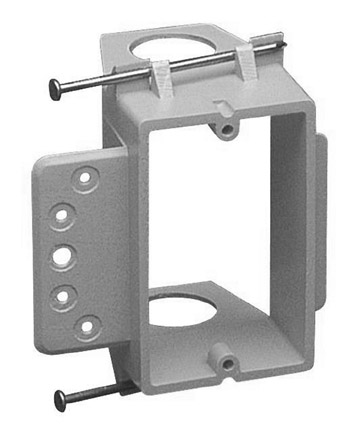
Figure 3-2: A standard electrical outlet box can be used to mount connectors and faceplates for structured wiring.
Photo courtesy of Lamson & Sessions.
Sidecar Brackets
Several manufacturers make specialized low-voltage boxes and brackets that are able to service both AC electrical power lines and low-voltage structured wiring lines. The double-gang box shown in Figure 3-3 includes a separator panel in the center that meets the requirements of the NEC and EIA/TIA standards 568 and 570 for the separation of these lines.

Figure 3-3: A double-gang box that uses a separator panel to segregate AC power lines and structured wiring lines
Photo courtesy of Lamson & Sessions.
Another box type attaches to the side of an electrical service outlet box to create a tandem box that will appear, after the drywall is installed, to be a two-gang box. Add-on or sidecar brackets (see Figure 3-4) allows the outlet box to be paired with an electrical outlet, creating the finished look of a two-gang box rather than two separate outlets a short distance from each other on the same wall.
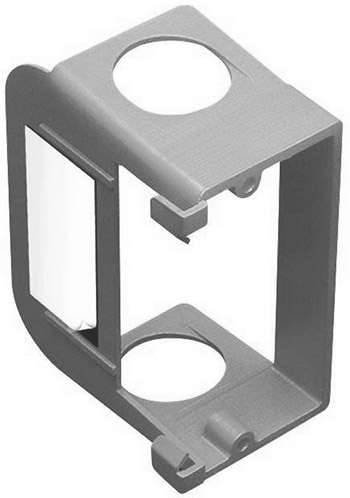
Figure 3-4: An add-on bracket can be attached to the side of an electrical box for structure wiring that creates the appearance of a two-gang box.
Photo courtesy of Lamson & Sessions.
When using sidecar brackets be sure to wire the low-voltage wire as far away as possible from the electrical wires. For example, the electrical wiring comes down the stud that the electrical box is mounted on, so wire the low-voltage wire down the opposite stud of that stud opening, wiring into the two-gang box at a right angle to the electrical wiring.
Cable
A variety of composite cable systems, like the one shown in Figure 3-5, are available that combine coaxial cable and Cat 5e cables into a single bundle, called a “2 + 2” bundled cable. Some manufacturers also offer what amounts to a “2 + 2 + 2” that includes two runs of fiber optic cable as well.

Figure 3-5: An example of a composite cable with 2 RG-6 and 2 Cat 5 runs
Photo courtesy of Smarthome, Inc.
Cable Schemes
Table 3-2 lists the recommended cables that should be installed for a variety of structured wiring applications. Remember that this is only a recommendation, but it does adhere closely to most of the recognized standards.
|
Space |
Wire Types |
Number of Runs |
Applications |
|---|---|---|---|
|
Typical room |
Cat 5e/RG-6 |
2/2 |
Phone/TV/Data/Satellite |
|
Media center |
Cat 5e/RG-6 |
3/3 |
Phone/TV/AV/Data |
|
Home office |
Cat 5e/RG-6 |
3/3 |
Phone/TV/Data/AV |
Cable Installation
After the outlet boxes and mud rings have been installed, the next step in the pre-wire process is to install the cabling. In a new construction pre-wire situation, the structured cable runs through holes drilled in the wall studs and runs parallel to the electrical wiring that should already be in place.
As a general rule, the path through the wall studs used for the structured cable should not be placed too close to the electrical power lines to avoid the possibility of electrical interference on the structured cabling. The general guidelines for how far a structured cable should be placed from an electrical line vary from 6- to 24-inches (with 6-inches the absolute minimum distance). However, the generally accepted standard and convention is that 12-inches is the minimum that should be used, unless for some reason the structure doesn’t permit it. If the electrical cable in question is a high-voltage line, such as a 240V line, the minimum distance moves out to 24-inches. If an electrical cable must be crossed, the structured cabling should do so at a 90-degree angle.
Nearly all structured wiring cable products are designed for installation in residential settings, so by and large, the bend radii required to pull a cable down between two wall studs is well within its specifications. However, sharp bends or kinks should be completely avoided.
The primary concern for pulling cable into an existing structure is to spread the runs of the various cable types over as wide a space as possible. If it is absolutely necessary to cross cabling, there are standards and guidelines for the installation of low-voltage cabling that covers overlap, separation, and crossing angles.
In general, structured wiring cable should be installed using the following guidelines:
- Use no more than 25 pounds of pull on the cable.
- Use at least 12-inches of separation between 120 volt power and structured wiring cables, and at least 24-inches of separation for 240 volt lines.
- If a low-voltage cable crosses a power cable, it must do so at a 90-degree angle.
- The low-voltage cable should avoid fluorescent light fixtures, and if you must run a cable by a fluorescent fixture, treat it like a 240 volt electrical line.
- Cable sheathing should not be stripped more than 1.25-inches from the connection end of the cable and 1-inch is better.
- UTP wire pairs should not be untwisted more than 0.5-inch and 0.375-inch is even better.
- The bend radius of a cable should be at least 1-inch, but some cable types are more sensitive than others.
- Between a transmitting source and a terminating (receiving device), a UTP cable segment should not be longer than 100 meters or a bit more than 300 feet.
Note In North America, UTP is the most commonly used cable for low voltage (LV) data networking installations. However, outside of North America, shielded twisted-pair (STP) and screened twisted-pair (ScTP) wiring are commonly used.
Cable Path
In a structured cabling environment, one or more separate cable runs are strung between the outlet location and the central distribution panel so that each outlet has its own home-run of cable back to the panel.
When routing the structured cable through a wall stud, you should use a 5/8-inch auger drill bit to drill a hole in the horizontal center of the stud. This provides both a hole big enough for most cable bundles and composite cabling, but also enough wood is left in the stud on each side (at least 1-inch) of the hole to retain the strength of the stud. If you are concerned that the dry wall installers may penetrate your cable when they screw on the dry wall, place a nail plate on the front edge of the stud even with the cable hole. Minimize the number of holes drilled through a wall stud to maintain the integrity of the stud.
Another cable path that can be used is to pass the cable through a hole drilled in the header of the wall (the boards to which the studs are fastened) and run the cable through the attic or crawl space above or below the house. Using this path, the cable can be placed on J-hooks (see Figure 3-6) or tie wraps that hold the cable in place without the threat of damage from nails, staples, or other fasteners used to secure the cable to wall studs.
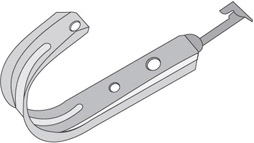
Figure 3-6: A J-hook can be used to suspend cable in open spaces.
Service Loops
At the outlet end of the structured cable pulled through the walls, leave at least 2 feet of cable length to work with during the trim-out phase of the cabling project. At the distribution panel have at least 2 feet of cable after the panel location, or better yet, have all cables reach the floor. Having ample cable in a service loop provides some flexibility when you are terminating the cable at an outlet or the distribution panel.
Tuck the service loop into the outlet opening of the wall in such a way that it can later be pulled out through the outlet or mud ring after the wallboard is installed.
It is beneficial to protect the distribution panel cable by putting a large piece of cardboard to fit in the panel opening to cover all the cables.
Cable Handling
Cat 5 and RG-6 are high-frequency cables and must not be damaged during installation. This means that staples or any other type of cable fastener that dents, pierces, or crimps the cable in any way shouldn’t be used. Also avoid bending these cable types too sharply when entering or exiting a wall stud cavity. The minimum bend radius for Cat5 is 1-inch, or 25.4 millimeters (mm), and for RG-6 is 2.5-inches, or 63.5-mm, (see Figure 3-7).
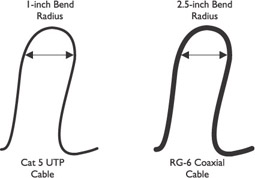
Figure 3-7: The bend radii of Cat 5 and RG-6 cables
Another important part of cable handling is to label or tag each run of cable per the wire chart. Each cable should be numbered per the wire chart and the number recorded on its labeling. This identification links the cable back to the cable plan created during the design and planning phases.
Cable Trays, Conduits, and Chases and Other Cable Supports
Most often, residential cables are routed through stud walls. However, if the cable has to be routed through an attic, basement, or another open space, the cables must be supported and organized, so typically they are routed through cable (J) hooks (see Figure 3-8) or tie-wraps nailed to the rafters (Figure 3-8).
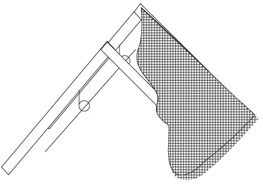
Figure 3-8: Cable ties nailed to the overhead beams can be used suspend and support a cable run through an open space.
Cable TraysIn residential settings, it is rare that you would need to install cable trays that look something like a ladder installed horizontally. A cable tray is used to bridge cable runs that must run over areas that have no natural support features. For example, if you were to run cable through an attic, a cable tray hung from the roof rafters provides a secure and safe pathway for the cabling.
ConduitsConduits can be rigid aluminum tubing or plastic piping or flexible plastic tubing. In most areas, conduit is not required for home structured wiring but can be a wise choice when the pathway available for the structured cable is too close to electrical wiring or other interference sources.
EIA/TIA 570, the standard for residential cabling, recommends that data cabling is segregated into its own pathway, which has been interpreted in some municipalities as requiring conduit for all wiring, and especially data network cabling. So, be sure and check your local building and electrical codes.
Some technicians, especially those working with fiber optic cable, recommend the use of conduits for a variety of reasons, including ease of cable installation, ease of cable upgrades, ease of new outlet installation, and protection of the cable from damage.
ChasesA chase is a tube or a three-sided frame placed horizontally on a wall or in a slot cut into a floor. A chase permits cabling to be suspended and protected along a wall or beneath a floor. Chases are commonly used in multistory buildings in the space between the floors. Typically, a lid or cap is placed over the chase to protect the wire. There are vertical chases as well, which are on walls or in shafts to provide a protective path for riser cables, something that is rare in most home-wiring installations.
As a part of future-proofing a home, it’s wise to install 2-inch plastic pipe (conduit or chase) between the distribution panel and some key areas of a home, such as the attic, home office, and media center.
Trim Out
The final step in the wiring process is called trim out, during which the cable runs are terminated and installed in the distribution panel and the appropriate connectors and outlets at the in-room end are installed. The trim-out phase is done after the wallboard installers have put up the drywall to cover the wall studs and the painters are finished.
The Distribution Panel
Whether the structured wiring scheme comes together in a small distribution panel, like the one shown in Figure 3-9, or a large fully-integrated panel, like that in Figure 3-10, what makes the system structured is that the home-run cable runs all terminate in this one location.

Figure 3-9: A residential structured wiring distribution panel
Photo courtesy of Channel Vision
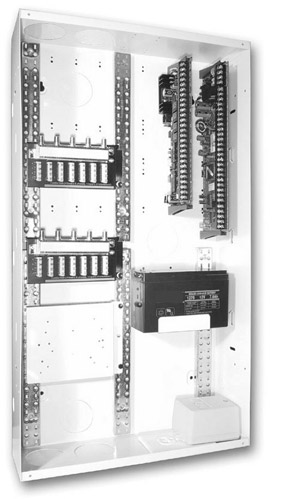
Figure 3-10: An integrated structured wiring distribution panel
Photo courtesy of Leviton Manufacturing Company.
The structured wiring distribution panel is the central hub for the communications lines and connections in a home. It serves as the interconnection point between service lines that enter the home and the cabling that distributes the various services to the rooms, areas, and zones of the house. The panel also provides an interconnection point for the data networking cabling throughout the home.
A distribution panel doesn’t have to be as commercial as those shown in Figures 3-11 and 3-12; the various interconnecting devices could actually be mounted on a sheet of plywood and hung on a wall. However, commercially available distribution panels typically have basic service connections included and a variety of optional modules for different connection types and quantities.
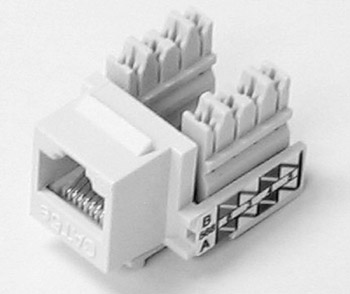
Figure 3-11: An RJ-45 jack is used to terminate Cat 5/Cat 5e cabling intended for use with a data network.
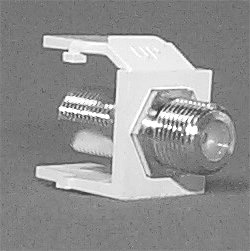
Figure 3-12: An F Type connector is used to terminate RG-6 coaxial cable runs.
A common distribution panel supports a coaxial signal splitter, a telephone distribution block, and a data networking distribution block. Other devices, such as a telecom distribution block, audio distribution, and a video distribution block can be added to the panel, if required.
Outlet Installation
At the outlet end of the cable pulled during pre-wire, the cable must be terminated with the appropriate jack or plug to provide connection to the distribution panel and the service it delivers.
Terminator Types
The type of termination placed on a cable run depends on the intended use for the cable. Typically, Cat 5e cabling is terminated with an RJ-45 jack (see Figure 3-11), and RG-6 is terminated with a Type F connector (see Figure 3-12). However, as I discuss in later chapters, other connectors can be placed on these cables—again, depending on the intended use of the connection.
Cat 5 connectors typically require the use of a 110-type punch down tool, but tool-less models are also available. Attaching either an F-type male end on the end of a coaxial cable or attaching the cable directly to an F-type jack requires the use of a coaxial cable crimper.
Faceplates
After the cable is terminated (and the wall is completely finished—texturing, painting, wall paper, etc.), the connector or jack on the end of the cable can be installed into a faceplate. In some cases, the jack is integrated into the faceplate, but most connector manufacturers now provide faceplates that can hold a variety of snap-in connectors (see Figure 3-13). If the jacks on a faceplate don’t follow a standard pattern that is used throughout a home, each jack on the faceplate should be labeled. If a standard pattern is used, labeling should be optional. If used, faceplate labels should be simple and to the point.
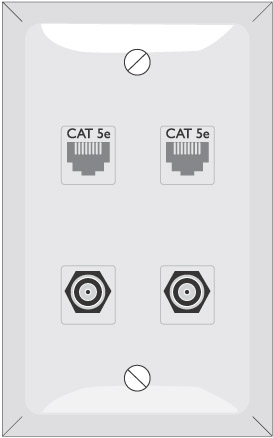
Figure 3-13: A faceplate with two RJ-45 and two RG-6 snap-in modular jacks, with the jacks identified
Cable and Outlet Testing
After each cable run is in place, and even before the cable is terminated, is a very good time to test the continuity of the cable. Testing the cable continuity enables you to check for any crimps, breaks, or other installation problems that may have happened while the cable was being pulled into the walls. A cable with poor or no continuity should be replaced; it is just not good practice to leave a spliced cable in the wall of a structured wiring installation.
A voltage meter or special cable continuity testers, like the one shown in Figure 3-14, that have settings or adapters for various types of wire and cable, is the best tool for this task. It is also a good idea to check continuity after each cable is terminated to ensure that problems weren’t introduced with the attachment of a connector or jack.
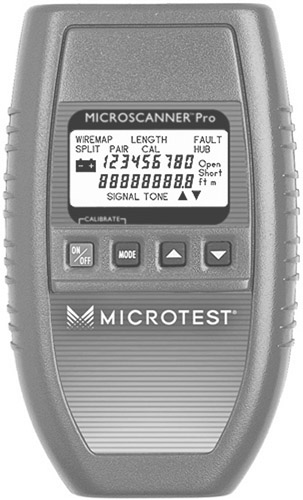
Figure 3-14: A cable tester is useful for testing a cable for continuity problems.
Photo courtesy of Fluke Networks.
| Note |
The specific tests that should be run on each specific type of cable, in addition to continuity checking, are detailed in the chapters relating to specific cable applications. |
Review
Before beginning the pre-wire process, you should meet with the homeowners and discuss room use issues that impact the installation of the wiring and its connectors. This action ensures a shared vision of the home’s structured wiring environment and should result in a rough sketch of the home, the devices, and the home’s wiring requirements.
The process of pre-wiring a house consists of several major activities: determine the locations of the distribution plan and the outlets; create a wire chart, place outlet boxes or mud rings at each location, pull the appropriate type and number of cable runs to each outlet location, label all cables at distribution panel, terminate or protect the cables at the outlets with the appropriate connecters; connect the cable runs into the home’s distribution panel and test all cable runs and connections.
Before beginning the pre-wire phase of your project, ensure that you have the tools you’ll need to drill, pull, strip, terminate, and test the cabling installed.
The first step in the pre-wiring process is to install the outlet boxes and mud rings or plaster rings. Outlet boxes or mud rings are nailed or screwed to wall studs at 12-inches or 300 millimeters above the floor and 12- to 16-inches from any nearby electrical outlets. The outlet box or mud ring should be of appropriate size to accommodate the size and amount of cabling that is to terminate or pass through it. Sidecar brackets allow for two-gang boxes with both electrical and low-voltage wiring. Be sure to follow installation practices to avoid interference.
Four standard types of wiring are typically used to pre-wire a home in a structured wiring scheme: Cat 5e, coaxial, fiber optic, and quad-wire. Bundled cables that combine coaxial cable and Cat 5e cables into a single bundle, and those that also include one or more runs of fiber optic cable, are commonly used.
Structured cable should not be placed less than 12-inches to electrical power lines to avoid the possibility of electrical interference. If an electrical cable must be crossed, the structured cabling should do so at a 90-degree angle. One or more separate cable runs are used to connect an outlet to the distribution panel using a home run or dedicated cable scheme. At least 2 feet of extra cable length should be left at the outlet end of the cable during rough-in to provide working cable for trim out. At least 2 feet beyond the distribution panel location, or down to the floor, of cable should be left at the distribution panel location.
Cat 5 and RG-6 are high-frequency cables and must not be damaged by staples or any fastener that may dent, pierce, or crimp the cable in any way. Avoid bending these cable types too sharply when entering or exiting a wall stud cavity.
Each cable run should be labeled per the wire chart to identify its cable type and intended use. Each cable should also be numbered and the number recorded on its labeling and the wiring plan diagram. Cable hooks can be used to bridge cable runs over areas with no support features, such as across an attic. Aluminum tubing or plastic piping conduits are not required for most home structured wiring, but should be used when the pathway available is too close to electrical wiring or other interference sources. Include a chase of 2-inch plastic piping for future use from key areas.
In the trim-out phase, cable runs are terminated and installed in the distribution panel and terminated with the appropriate connector at the outlet end. The trim-out phase is done after the wallboard installers have put up the drywall to cover the wall studs and the painters have finished.
The structured wiring distribution panel is the central hub for the communications lines and connections in a home. It serves as the interconnection point between service lines that enter the home and the cabling that distributes the various services to the rooms of the house.
Cables must be terminated with the appropriate jack or plug at the outlet or in-room end of the cable to provide connection to the distribution panel and the service it delivers. The type of termination used depends on the intended use of the cable. Cat 5e cabling is terminated with an RJ-45 jack and RG-6 is terminated with a Type F connector. After the cable is terminated, the connector or jack is installed into a faceplate. Each outlet jack inserted into a faceplate can be identified or a standard layout in the faceplate followed.
Performing continuity testing checks each cable for any crimps, breaks, or other installation problems that may have been introduced when the cable was pulled into the walls or when the drywall was hung. A cable with poor or no continuity should be replaced; it is just not good practice to leave a spliced cable in the wall of a structured wiring installation. A voltage meter or cable tester is used for this testing.
Questions
- Before beginning the process of pre-wiring a home, what document, form, or chart should be completed?
- Materials list
- System documentation
- User training guide
- Wire chart
- With whom should the home technology integration contractor meet before beginning the actual work of the pre-wiring process?
- Cable manufacturer representative
- Audio/video technicians
- Homeowners
- Building contractor
- Which of the following is not performed as part of a pre-wire project?
- Locating outlets and connectors
- Installing the distribution panel
- Fine-tuning receivers, amplifiers, and speakers
- Pulling wire into the walls
- What is the recommended minimum separation distance between a structured wiring cable and an AC electrical cable?
- 6-inches
- 18-inches
- 24-inches
- 12-inches
- Which of the following cable types is not commonly used for structured wiring?
- Cat 5e
- Cat 3
- RG-6
- Fiber optic
- If a structured wiring cable must cross an AC power cable, at what angle should the cables be crossed?
- 30 degrees
- 45 degrees
- 75 degrees
- 90 degrees
- Which of the following would not be an option for running cable through an open attic or empty building space?
- Cable trays
- J-hooks
- Cable ties
- Nails
- What is the reason to install extra wiring and conduit in a home along with its required structured wiring?
- In case of errors
- In case of faulty cable runs
- To increase profitability
- To provide future-proofing
- What is the central device in a structured wiring scheme that provides an interconnection between external services and internal cabling?
- Hub
- Switch
- Distribution panel
- Outlet box
- What cable test should be performed immediately after installing a structured cable, typically before the cable is terminated?
- Fox and hound
- Attenuation
- Crosstalk feedback
- Continuity
Answers
- C. The wire chart summarizes the cabling to be installed and identifies the placement and purpose of each cable run, something that should be understood clearly before beginning the pre-wiring of a home.
- C. Not that meeting with any of the other choices would be a bad idea, but only the homeowners know exactly what they wish their home systems to provide and where.
- C. This part of the project comes much later in the process. All of the other choices are performed during the pre-wire process.
- A. Although the recommended distance is 6- to 24-inches between structured wiring and electrical lines, the minimum distance should be 24-inches to avoid interference from 240V lines.
- B. This cable type doesn’t provide enough bandwidth to handle today and tomorrow’s system requirements. The other cable types listed as choices are structured wiring cable types.
- D. Crossing structured wiring cables and electrical cables at right angles minimizes the potential for interference.
- D. Regardless of the type of space a cable is running through, nails or any other fastener that may dent, pierce, or damage a cable should not be used. The other choices, either individually or together, work nicely to string cable through an open space. There are curved cable staples that work.
- D. Extra cable runs and conduit help to reduce the cost of future additions to the structured wiring system and to provide flexibility for the support for subsystems expanded or added at a later date. If you answered “C,” shame on you!
- C. Hubs and switches are connectivity devices used primarily for data networking . Outlet boxes are used to mount terminators and connectors to cable runs.
- D. This check verifies that the cable is free of breaks and shorts end-to-end. The other choices are cable tests that are used for locating, identifying, and verifying cable performance capabilities.
Part I - Home Technology Installation Basics
- Wire and Cable Basics
- Connector Types and Uses
- Wiring Installation Practices
- Codes, Standards, and Safety Practices
Part II - Structured Wiring
- Infrastructure Wiring Basics
- Planning a Structured Wiring Installation
- Rough-In Installation
- Trim-Out Installation
- Troubleshooting Structured Wiring
Part III - Home Computer Networks
- Computer Network Basics
- Computer Network Hardware
- Computer Network Software
- Designing and Installing a Computer Network
- Troubleshooting a Home Network
Part IV - Audio/Video Systems
- Distributed Audio System Basics
- Designing and Installing Distributed Audio Systems
- Distributed Video Basics
- Designing and Installing Distributed Video Systems
- Troubleshooting Audio Systems
- Troubleshooting Video Systems
Part V. Home Lighting Management Systems
- Home Lighting Basics
- Home Lighting Devices
- Designing a Home Lighting Control System
- Installing a Home Lighting Control System
- Troubleshooting and Maintaining Lighting Control Systems
Part VI - Telecommunications
- Home Communication System Basics
- Designing and Installing a Home Telephone System
- Troubleshooting a Home Communication System
Part VII - HVAC and Water Management
Part VIII - Security System Basics
- Security System Basics
- Designing a Home Security System
- Installing a Home Security System
- Troubleshooting and Maintaining a Home Security System
- Home Security Surveillance Systems
- Home Access Control Systems
Part IX - Home Technology Integration
- Defining Users Needs and Desires
- User Interfaces
- Home Automation Controllers
- Programming
- Integrating the Connected Home
- Other Home Technology Integration Devices
Part X - Appendices
EAN: N/A
Pages: 300
